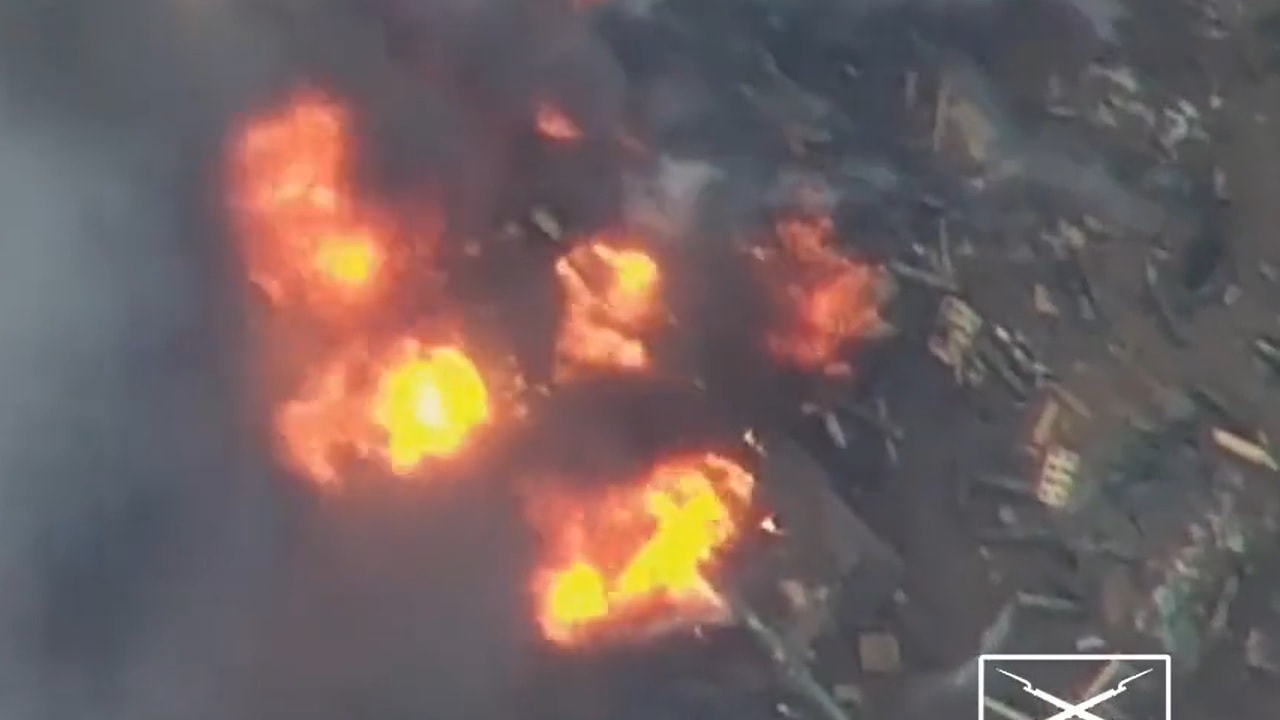Another video is making the rounds on social media that highlights the capabilities of the Russian Lancet loitering munition.
A 56-second clip shared by Ukraine Weapons Tracker (@UAWeapons) on Sunday showed a Ukrainian Krab 155mm self-propelled howitzer and supporting ammo truck coming under attack from the unmanned aerial system.
The highly edited video, which was recorded by another drone overhead, shows the destruction of both Ukrainian vehicles. It is unclear when or exactly where the video was recorded, but snow can be seen on the ground, and there was a blizzard in the Donbas region last week. The snow melted over the weekend.
What We Know
The ZALA Lancet loitering munition, designed by the ZALA Aero Group, a subsidiary of the Kalashnikov Group, is one of the few successful domestically built Russian platforms to see service in Ukraine. It is the successor to the Kub (“Cube”), an earlier, flying-wing-style loitering ordnance system also developed by ZALA. The Lancet, which was first unveiled in June 2019, was field-tested in Syria, where it was employed by anti-government forces in Idlib in 2020-2021.
The Lancet features two X-shaped wings at the front and rear of the fuselage and is powered by an electric motor that drives a two-bladed propeller located at its rear. It is constructed of plastic and composite materials and weighs just 12 kilograms, including its 3 kg payload.
The unmanned aerial vehicle has a maximum range of 40 kilometers, and its endurance is approximately 40 minutes. The ZALA Lancet can serve in both a reconnaissance and attack role, and during flight it can be directed by GPS coordinates or visual control. During the terminal part of a mission, it can be controlled manually to target via electro-optical guidance and a TV guidance unit.
Russian state media has praised the capabilities of the Kub and Lancet UAVs, citing commentary from Rostec, the Russian military tech conglomerate.
“The KUB and Lancet drones have proven their worth in combat conditions. Both drones are quite quick, quiet, easy to use, capable of covering a distance of tens of kilometers, and feature high accuracy,” Rostec’s press office told Tass last June. “In particular, the Lancet is highly autonomous and carries an optical-electronic system that helps independently ferret out and destroy a target.”
In December, Forbes contributor David Hambling reported that the Lancet has been racking up the kills, primarily hitting high-value targets. But he also noted that there had been at least a dozen misses with the drones, while in another case the Lancet struck a Russian position in an incident that was either made to hype the UAV’s capabilities, or was a case of friendly fire.
Currently, the Ukrainian military has few effective means to counter the kamikaze drones, but options are being explored including metal mesh tarps.
#Ukraine: A Ukrainian Krab 155mm self-propelled howitzer along with an ammo truck was destroyed by a Russian Lancet loitering munition. pic.twitter.com/9NdEcgCxKb
— ???????? Ukraine Weapons Tracker (@UAWeapons) April 2, 2023
Both sides are clearly benefiting from drones and loitering munitions on the front lines.
Author Experience and Expertise:
A Senior Editor for 19FortyFive, Peter Suciu is a Michigan-based writer. He has contributed to more than four dozen magazines, newspapers, and websites with over 3,200 published pieces over a twenty-year career in journalism. He regularly writes about military hardware, firearms history, cybersecurity, politics, and international affairs. Peter is also a Contributing Writer for Forbes and Clearance Jobs. You can follow him on Twitter: @PeterSuciu.

